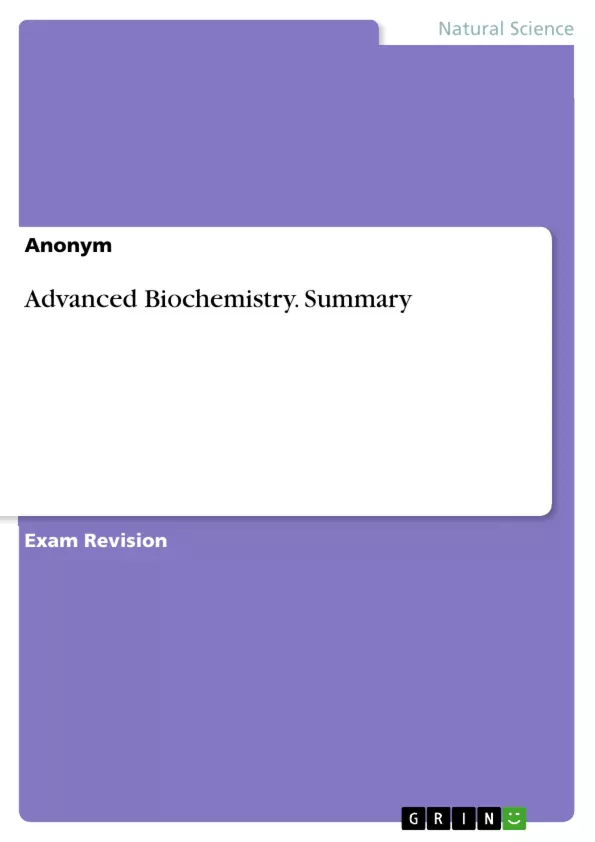Englische Zusammenfassung des Stoffs aus der Vorlesung "Advanced Biochemistry" zur Prüfungsvorbereitung.
Inhaltsverzeichnis (Table of Contents)
- 1. Wahl – Splicing
- 12. Heyd - Alternative Splicing
- 3. Freund NMR
- 4. Heinemann - Intracellular Trafficking and Sorting
Zielsetzung und Themenschwerpunkte (Objectives and Key Themes)
This text aims to provide a comprehensive overview of various biochemical processes, focusing on the mechanisms and intricacies of splicing, alternative splicing, protein-peptide interactions, and intracellular trafficking. It delves into the energy requirements and regulation of splicing, the role of cis- and trans-acting elements in alternative splicing, and the mechanisms by which peptides are loaded onto MHC II molecules.
- Splicing mechanisms and energy requirements
- Regulation of alternative splicing
- Peptide loading onto MHC II molecules
- Intracellular trafficking and protein sorting
- NMR spectroscopy for protein and peptide analysis
Zusammenfassung der Kapitel (Chapter Summaries)
1. Wahl – Splicing
This chapter delves into the process of pre-mRNA splicing, explaining why it is considered an energy-neutral process despite requiring energy in the form of NTP hydrolysis. The chapter discusses the role of consensus sequences in splice site selection and how the spliceosome ensures the fidelity of splicing. It also explores the differences between the spliceosome and the ribosome.
12. Heyd - Alternative Splicing
This chapter focuses on alternative splicing, exploring the role of exonic splicing enhancers (ESE) and exonic splicing silencers (ESS) in regulating splicing patterns. It discusses cis- and trans-acting elements involved in supporting and inhibiting exon inclusion, providing methods for detecting these elements experimentally.
3. Freund NMR
This chapter introduces nuclear magnetic resonance (NMR) spectroscopy as a tool for analyzing protein and peptide interactions. It explains the basic principles of NMR, highlighting the process of resonance assignment. The chapter delves into the application of NMR for studying peptide loading onto MHC II molecules and the potential of small molecules to interfere with this process.
4. Heinemann - Intracellular Trafficking and Sorting
This chapter explores the intricate world of intracellular trafficking and sorting in eukaryotic cells. It outlines the mechanisms by which misfolded proteins are detected and degraded, focusing on the role of chaperones and the ERAD system. The chapter further examines the principles of vesicle transport, highlighting the conserved nature of this process across different species.
Schlüsselwörter (Keywords)
This text focuses on key concepts such as pre-mRNA splicing, alternative splicing, spliceosome, MHC II molecules, peptide loading, intracellular trafficking, vesicle transport, NMR spectroscopy, protein folding, and protein degradation. It explores the interactions of cis- and trans-acting elements, the roles of chaperones, and the use of NMR for analyzing protein and peptide interactions.
- Arbeit zitieren
- Anonym (Autor:in), 2014, Advanced Biochemistry. Summary, München, GRIN Verlag, https://www.grin.com/document/282481



